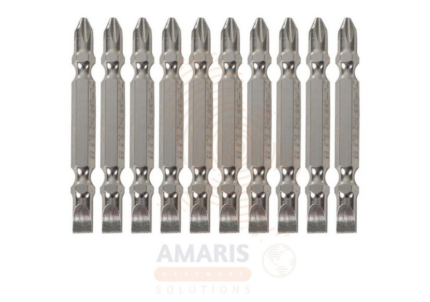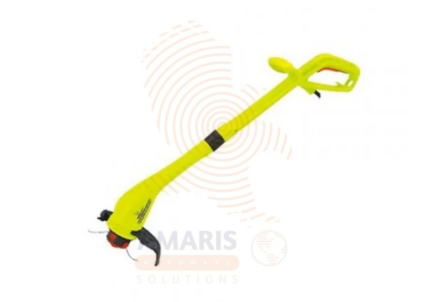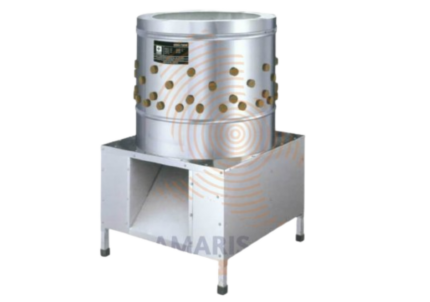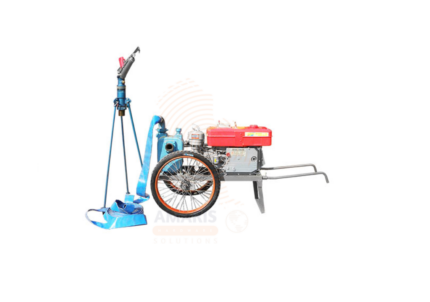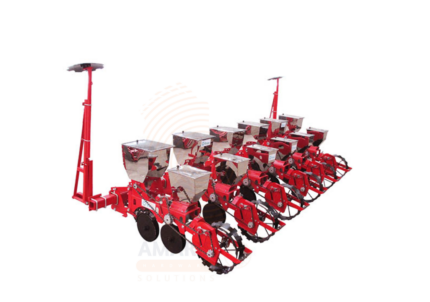Back to products
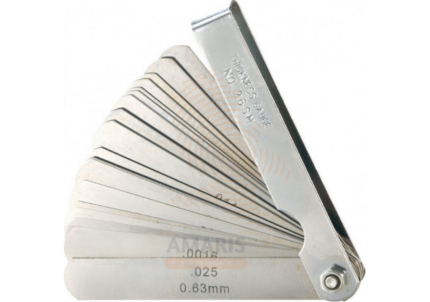

Combination Feeler Gauge Set
$15.96 Original price was: $15.96.$15.16Current price is: $15.16.
Feed Mixer
WhatsApp Order
A feed mixer is an agricultural machine designed to blend various ingredients—such as grains, vitamins, minerals, and additives—into a uniform feed mixture for livestock and poultry. These mixers come in different forms, including horizontal, vertical, and paddle mixers, and are essential in both small-scale farms and large commercial feed operations. Feed mixers ensure consistent nutrient distribution, improve feed efficiency, and reduce feed waste. By automating the mixing process, they also save time and labor while enhancing the health and productivity of animals through balanced rations.
Description
Table of Contents
ToggleFeed Mixer
Uses
-
Livestock Feed Preparation
o Mixes grains, proteins, silage, and supplements into balanced rations for cattle, pigs, sheep, and goats.
o Ensures even distribution of nutrients to prevent selective feeding and promote animal growth. -
Poultry Feed Production
o Prepares finely mixed feed suitable for chickens, ducks, and turkeys to support egg production and weight gain.
o Allows precise inclusion of additives, minerals, and medications. -
Commercial Feed Manufacturing
o Used in large-scale feed mills to blend high volumes of ingredients efficiently and uniformly.
o Supports mass production of specialized feed formulas. -
On-Farm Feed Processing
o Enables farmers to customize feed mixtures based on seasonal availability or livestock needs.
o Reduces dependency on commercial feeds and cuts operational costs. -
Aquaculture Feed Mixing
o Blends specialized floating or sinking feed formulations for fish and other aquatic species.
o Promotes optimal feed conversion rates and reduces water contamination. -
Homemade Feed Formulations
o Ideal for small-scale farmers looking to create their own organic or specialty animal feeds.
o Ensures consistent quality and traceability of ingredients. -
Nutrient Supplement Distribution
o Incorporates vitamin and mineral premixes evenly into daily feed rations.
o Prevents overdose or deficiency that could harm animal health.
SAFETY HANDLING PRECAUTIONS
Safety Precautions
-
Wear Protective Gear
o Use gloves and eye protection to guard against dust, allergens, and moving parts.
o Wear a dust mask or respirator in poorly ventilated mixing areas to prevent respiratory irritation. -
Keep Hands and Tools Clear
o Never insert hands, tools, or foreign objects into the mixer while in operation.
o Always turn off and unplug the machine before cleaning or maintenance. -
Ensure Proper Installation
o Place the mixer on a level surface to prevent tipping or vibration during use.
o Secure the power source to prevent electrical hazards. -
Electrical and Mechanical Safety
o Check all electrical connections for damage or wear before use.
o Keep motor vents clear of dust and debris to avoid overheating. -
Prevent Overloading
o Do not exceed the manufacturer’s capacity recommendations, which can damage the motor or reduce mixing efficiency.
o Load ingredients gradually for optimal blending and equipment protection. -
Regular Maintenance
o Clean the mixer thoroughly after each use to prevent ingredient buildup, mold, or contamination.
o Inspect belts, paddles, and moving parts regularly and replace worn components. -
Training and Manual Use
o Operators should be trained on machine handling and emergency procedures.
o Read and follow the manufacturer’s manual for specific operating instructions. -
Safe Ingredient Handling
o Store feed ingredients in dry, pest-free conditions to ensure safety and quality.
o Avoid mixing spoiled or contaminated ingredients that could harm livestock.
Related products
Disc Harrow
A disc harrow is an essential agricultural implement used to till the soil, break up clods, and prepare the land for planting. It consists of multiple concave metal discs arranged on one or more axles, which rotate and cut into the soil as it is pulled across fields by a tractor or other machinery. The discs chop up crop residue, aerate the soil, and create a smooth, even seedbed. Disc harrows vary in size and configuration to suit different soil types and farming needs. This tool improves soil quality, weed control, and crop yields, making it indispensable in modern farming.
Electric Brush Cutter
An electric brush cutter is a powered gardening tool designed for cutting and trimming dense vegetation, weeds, and overgrown areas. It is equipped with a motor that is powered by electricity, usually sourced from a power outlet or a rechargeable battery. The tool features a rotating cutting blade or a nylon string, commonly referred to as a trimmer line, that efficiently cuts through thick vegetation. Electric brush cutters are known for their ease of use, low noise levels compared to gas-powered alternatives, and their environmentally friendly operation. They are suitable for maintaining lawns, clearing brush, and tidying up areas where traditional lawnmowers may struggle to reach.
Feather Remover
A feather remover is a poultry processing tool or machine designed to efficiently remove feathers from birds such as chickens, ducks, and turkeys after slaughter. These devices can be manual or electric and are typically equipped with rotating rubber fingers or abrasive surfaces that grip and pull feathers without damaging the skin. Feather removers are widely used in small farms, butcheries, and poultry processing facilities to reduce labor time, improve hygiene, and ensure uniform feather removal. They offer faster and more sanitary plucking compared to manual methods, increasing productivity and consistency in meat processing.
Irrigation Pump Set
An Irrigation Pump Set is a complete system designed to move water efficiently from a source—such as a river, well, pond, or tank—to agricultural fields for crop irrigation. It typically consists of a water pump (centrifugal or submersible), an engine or motor (electric or fuel-powered), piping connections, filters, and sometimes a control panel or automation features. These pump sets are vital in agricultural operations, ensuring consistent and controlled water distribution to crops. They are used across small-scale farms to large commercial operations and are compatible with various irrigation methods like drip, sprinkler, or flood systems. Irrigation pump sets are built for durability, high flow rates, and long operational hours in tough outdoor conditions.
Lawn Saw Blade – Alloy
A lawn saw blade alloy refers to the material composition of the blade used in a lawn saw. The term "alloy" indicates that the blade is made from a mixture of different metals, combining their properties to enhance the overall performance and durability of the saw blade. The specific alloy composition can vary, but commonly used materials include steel alloys that provide strength, sharpness, and resistance to wear and corrosion. The choice of alloy in a lawn saw blade is crucial for ensuring efficient cutting, longevity, and resistance to the environmental conditions encountered during lawn and garden use.
Lopping Saw
A lopping saw is a specialized cutting tool designed for pruning and trimming tree branches, typically featuring a long, curved blade with large, sharp teeth. This tool is specifically crafted to make it easier to reach and cut through high or thick branches that may be challenging to access with standard pruning shears or a traditional saw. Lopping saws are commonly used in gardening, arboriculture, and forestry to facilitate efficient and controlled pruning of trees and shrubs.
Nylon Square Trimmer Line
A nylon square trimmer line is a type of cutting line used in trimmers and weed eaters for lawn and garden maintenance. It is typically made of nylon material and has a square cross-sectional shape, as opposed to a round or other geometric shape. The square design enhances cutting efficiency and durability, allowing the trimmer line to effectively cut through grass, weeds, and other vegetation. The choice of nylon as the material ensures flexibility, strength, and resistance to wear, making it suitable for various cutting tasks in landscaping and lawn care.
Planter
A Planter is a container or device used to hold soil and plants for gardening, landscaping, or indoor decoration. Planters come in various sizes, shapes, and materials, such as plastic, ceramic, metal, or wood, designed to provide an ideal growing environment for flowers, herbs, vegetables, or ornamental plants. They are essential for organizing plants in limited spaces, improving aesthetics, and facilitating plant care by providing drainage and soil containment.


 Acrylic Sealants
Acrylic Sealants Construction Adhesives
Construction Adhesives Double-Sided Tape
Double-Sided Tape Duct Tape
Duct Tape Electrical Tape
Electrical Tape Epoxy & Resins
Epoxy & Resins Masking Tape
Masking Tape
 Automotive Wrenches & Socket Sets
Automotive Wrenches & Socket Sets Battery Chargers & Jump Starters
Battery Chargers & Jump Starters Car Jacks & Stands
Car Jacks & Stands Car Wash & Detailing Products
Car Wash & Detailing Products Diagnostic Tools
Diagnostic Tools Tire Inflators
Tire Inflators Vehicle Lighting
Vehicle Lighting Oil & Lubricants
Oil & Lubricants
 Adhesives & Sealants
Adhesives & Sealants Bricks & Blocks
Bricks & Blocks Cement & Concrete
Cement & Concrete Drywall & Plaster
Drywall & Plaster Flooring (Tiles, Wood, Laminate)
Flooring (Tiles, Wood, Laminate) Lumber & Plywood
Lumber & Plywood Paints, Primers & Coatings
Paints, Primers & Coatings Insulation Materials
Insulation Materials Roofing Materials
Roofing Materials
 Circuit Breakers
Circuit Breakers Electrical Cables & Wires
Electrical Cables & Wires Switches & Sockets
Switches & Sockets Fuses & Relays
Fuses & Relays Connectors & Terminals
Connectors & Terminals Electrical Boxes & Panels
Electrical Boxes & Panels Conduit & Fittings
Conduit & Fittings Lighting Fixtures & Bulbs
Lighting Fixtures & Bulbs Extension Cords & Power Strips
Extension Cords & Power Strips
 Anchors
Anchors Bolts
Bolts Clips & Clamps
Clips & Clamps Screws
Screws Nuts
Nuts Washers
Washers Rivets
Rivets Nails
Nails Threaded Rods
Threaded Rods
 Hammers
Hammers Measuring Tools (Tapes, Levels, Calipers)
Measuring Tools (Tapes, Levels, Calipers) Screwdrivers
Screwdrivers Pliers & Cutters
Pliers & Cutters Saws & Blades
Saws & Blades Chisels & Punches
Chisels & Punches Allen Keys & Hex Keys
Allen Keys & Hex Keys Ratchets & Socket Sets
Ratchets & Socket Sets Wrenches & Spanners
Wrenches & Spanners
 Power Tool Accessories (Blades, Bits, Discs)
Power Tool Accessories (Blades, Bits, Discs) Rotary Tools
Rotary Tools Saws (Circular, Jigsaw, Reciprocating)
Saws (Circular, Jigsaw, Reciprocating) Drills & Drivers
Drills & Drivers Grinders & Sanders
Grinders & Sanders Heat Guns
Heat Guns Nail Guns
Nail Guns Impact Wrenches
Impact Wrenches Batteries & Chargers
Batteries & Chargers
 Pipes & Fittings (PVC, Copper, PEX)
Pipes & Fittings (PVC, Copper, PEX) Plumbing Tools
Plumbing Tools Pumps & Motors
Pumps & Motors Sealants & Adhesives for Plumbing
Sealants & Adhesives for Plumbing Valves & Taps
Valves & Taps Water Heaters
Water Heaters Drainage Systems
Drainage Systems Faucets & Fixtures
Faucets & Fixtures Hoses & Tubing
Hoses & Tubing
 Hinges & Latches
Hinges & Latches Hooks & Brackets
Hooks & Brackets Window Hardware
Window Hardware Chains & Cables
Chains & Cables Casters & Wheels
Casters & Wheels Shelving & Storage Systems
Shelving & Storage Systems Door Handles & Locks
Door Handles & Locks Drawer Slides & Cabinet Hardware
Drawer Slides & Cabinet Hardware
 Personal Protective Equipment (PPE)
Personal Protective Equipment (PPE) Respirators & Masks
Respirators & Masks Safety Glasses
Safety Glasses Safes
Safes Security Cameras
Security Cameras Gloves
Gloves Helmets
Helmets Ear Protection
Ear Protection Fire Safety Equipment
Fire Safety Equipment Locks & Padlocks
Locks & Padlocks Motion Sensors & Alarms
Motion Sensors & Alarms
 Garden Fencing
Garden Fencing Garden Furniture Hardware
Garden Furniture Hardware Lawn Mowers
Lawn Mowers Trimmers & Edgers
Trimmers & Edgers Shovels & Spades
Shovels & Spades Rakes & Hoes
Rakes & Hoes Pruning Shears & Loppers
Pruning Shears & Loppers Watering Systems (Hoses, Sprinklers, Nozzles)
Watering Systems (Hoses, Sprinklers, Nozzles)
 Interior Paints
Interior Paints Paint Brushes & Rollers
Paint Brushes & Rollers Paint Strippers & Thinners
Paint Strippers & Thinners Paint Trays & Accessories
Paint Trays & Accessories Exterior Paints
Exterior Paints Spray Paints
Spray Paints Primers & Undercoats
Primers & Undercoats Varnishes & Stains
Varnishes & Stains
 Gaskets & Seals
Gaskets & Seals Hydraulic Fittings
Hydraulic Fittings Industrial Fasteners
Industrial Fasteners Industrial Hoses
Industrial Hoses Lubricants & Greases
Lubricants & Greases Metal Sheets & Bars
Metal Sheets & Bars Bearings & Bushings
Bearings & Bushings Belts & Pulleys
Belts & Pulleys
 HVAC Filters
HVAC Filters Insulation for HVAC
Insulation for HVAC Air Conditioners
Air Conditioners Refrigerants
Refrigerants Ventilation Ducts & Fittings
Ventilation Ducts & Fittings Thermostats & Controllers
Thermostats & Controllers Fans & Blowers
Fans & Blowers
 Pegboards & Hooks
Pegboards & Hooks Shelving Units
Shelving Units Storage Bins & Containers
Storage Bins & Containers Toolboxes & Tool Chests
Toolboxes & Tool Chests Workbenches
Workbenches Drawer Organizers
Drawer Organizers Labeling Supplies
Labeling Supplies
 Welding Accessories (Clamps, Brushes)
Welding Accessories (Clamps, Brushes) Welding Electrodes & Rods
Welding Electrodes & Rods Welding Helmets & Gloves
Welding Helmets & Gloves Welding Machines
Welding Machines Soldering Irons & Stations
Soldering Irons & Stations Flux & Solder Wire
Flux & Solder Wire
 Generator Accessories
Generator Accessories Inverters
Inverters Portable Generators
Portable Generators Power Inverters
Power Inverters Transfer Switches
Transfer Switches Diesel & Gasoline Generators
Diesel & Gasoline Generators
 Transport Equipment: Carts, Dollies, and Hand Trucks
Transport Equipment: Carts, Dollies, and Hand Trucks Storage Solutions: Pallets, Racks, and Containers
Storage Solutions: Pallets, Racks, and Containers Lifting Equipment: Hoists, Cranes, and Jacks
Lifting Equipment: Hoists, Cranes, and Jacks Conveyors and Accessories: Belts and Rollers
Conveyors and Accessories: Belts and Rollers
